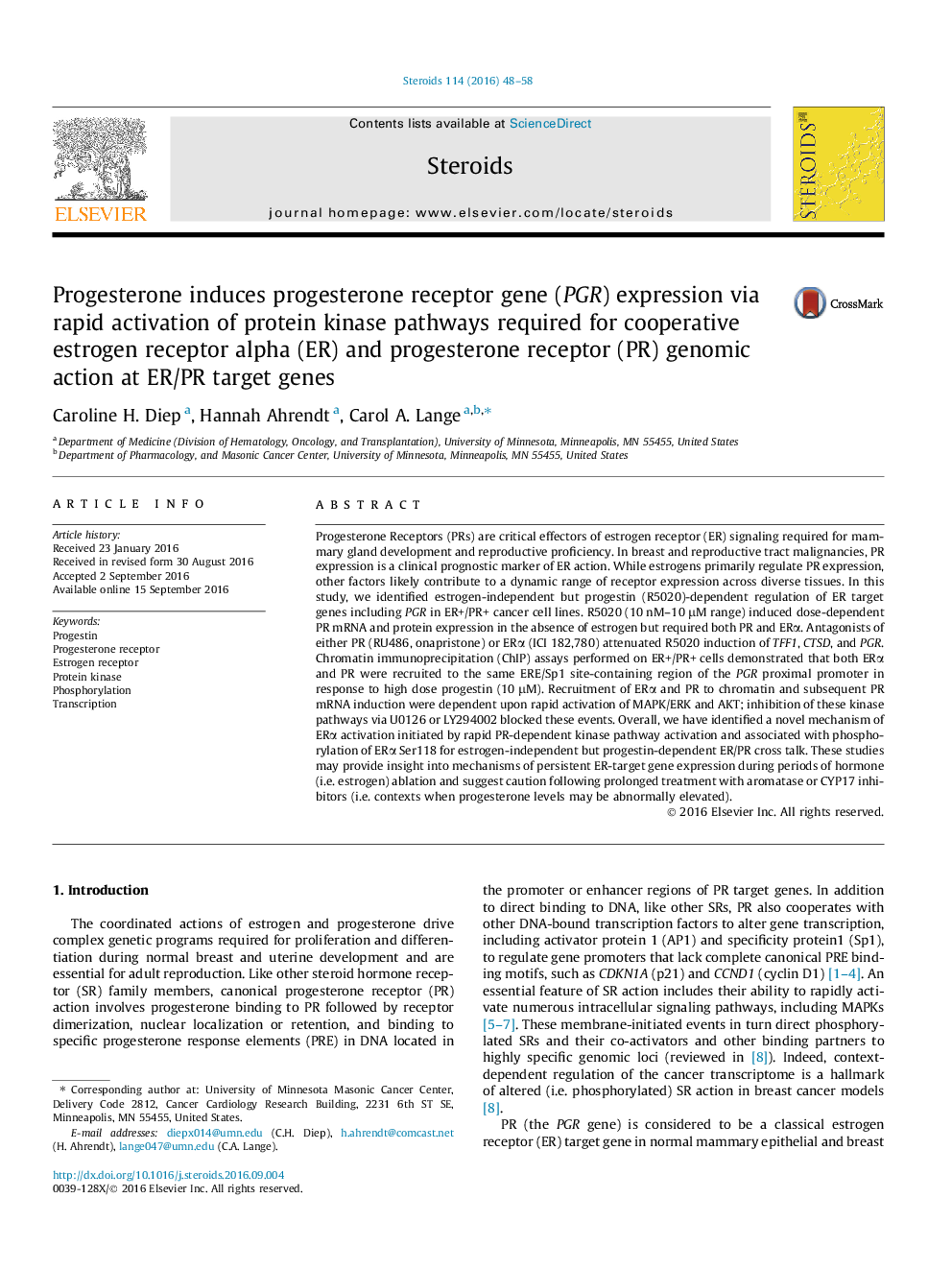| Article ID | Journal | Published Year | Pages | File Type |
|---|---|---|---|---|
| 5516737 | Steroids | 2016 | 11 Pages |
â¢Progestin (R5020) upregulates endogenous PR expression in ER+/PR+ cells.â¢R5020-dependent upregulation of PR levels are dependent on PR and ER activities.â¢ER and PR are recruited to the same region of the PGR gene promoter with R5020 treatment.â¢R5020 rapidly activates phosphorylation of ERα Ser118.â¢R5020-dependent recruitment of ER/PR and regulation of PR mRNA levels is kinase-dependent.
Progesterone Receptors (PRs) are critical effectors of estrogen receptor (ER) signaling required for mammary gland development and reproductive proficiency. In breast and reproductive tract malignancies, PR expression is a clinical prognostic marker of ER action. While estrogens primarily regulate PR expression, other factors likely contribute to a dynamic range of receptor expression across diverse tissues. In this study, we identified estrogen-independent but progestin (R5020)-dependent regulation of ER target genes including PGR in ER+/PR+ cancer cell lines. R5020 (10 nM-10 μM range) induced dose-dependent PR mRNA and protein expression in the absence of estrogen but required both PR and ERα. Antagonists of either PR (RU486, onapristone) or ERα (ICI 182,780) attenuated R5020 induction of TFF1, CTSD, and PGR. Chromatin immunoprecipitation (ChIP) assays performed on ER+/PR+ cells demonstrated that both ERα and PR were recruited to the same ERE/Sp1 site-containing region of the PGR proximal promoter in response to high dose progestin (10 μM). Recruitment of ERα and PR to chromatin and subsequent PR mRNA induction were dependent upon rapid activation of MAPK/ERK and AKT; inhibition of these kinase pathways via U0126 or LY294002 blocked these events. Overall, we have identified a novel mechanism of ERα activation initiated by rapid PR-dependent kinase pathway activation and associated with phosphorylation of ERα Ser118 for estrogen-independent but progestin-dependent ER/PR cross talk. These studies may provide insight into mechanisms of persistent ER-target gene expression during periods of hormone (i.e. estrogen) ablation and suggest caution following prolonged treatment with aromatase or CYP17 inhibitors (i.e. contexts when progesterone levels may be abnormally elevated).
